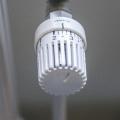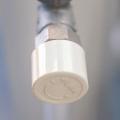Indoor climate in UM buildings
Creating the right climate in internal spaces remains a challenge, especially during an energy crisis. UM manages 250,000 square metres of university buildings, a mix of historic and more modern buildings in Randwyck and in Maastricht city centre. Every building, or building component, is situated or laid out differently; and the internal temperature is influenced by multiple factors. Moreover, we all perceive indoor climate differently. Comfort is a subjective term. While one person may be feeling cold, another may find it too hot. So, it’s not possible to create a comfortable, optimal climate for everyone.
In the context of the climate and energy crisis, UM has signed up to the national energy saving campaign ‘Zet ook de knop om’ (Turn it down). But we can’t tackle this crisis on our own. So we’re asking you to play an active part in helping us with this, among other things by being aware of our indoor climate.
You can help ensure that we achieve an indoor climate that is not only comfortable for you but that is also as efficient as possible and helps save energy. That’s why we’re asking all UM staff and students to use the radiators in our buildings more smartly (where we can control this ourselves using radiator valves).
On this page, you will find further information and instructions and a number of common problems and tips relating to indoor climate.
Use radiators smartly
By using our radiators more smartly, we can help keep the university’s buildings warmer during the winter and save energy in the process.
Most UM buildings are heated by radiators. It’s important that all radiators help keep our buildings warm, without significant fluctuations or differences in temperature. There are radiators with conventional valves (without numbers) and radiators with thermostatic valves (with numbers). Always turn radiator valves without numbers to half open. The norm for radiators with numbers is to set them to between 2 and 3.
You can turn them up higher than that but never turn them off completely!
Contact
Servicepoint Facility Services
available on workdays from 8.00 till 17.00
+31 (0)43-3882002
servicepoint-fs@maastrichtuniversity.nl
Visiting address
Duboisdomein 30
6229 GT Maastricht
Postal address
Maastricht University
Servicepoint Facility Services
Postbus 616
6200 MD Maastricht

Thermostatic valve
These are radiator valves with numbers. The norm for radiators with numbers is to set them to between 2 and 3.

Conventional radiator valve
These are radiator valves without numbers. Always turn radiator valves without numbers to half open.
Instructions for radiators
Don’t turn on radiators in corridors and halls. In teaching rooms, meeting rooms or in the workplace:
- Set the radiator to between 2 and 3. For radiators with a conventional valve, without numbers, that means half open. Depending on the temperature required in the room, the radiator can be turned up higher (to 5 or fully open). You can turn the radiator down but never to lower than 1 or less than a quarter open.
- If there are several radiators in a room, they must be set to the same level. In other words, never have one radiator fully off and the other fully on.
- Never turn the radiator right off! Not even in the evening, before the weekend or the last day before a holiday. If an office space is empty for a long period of time (> 1 week) while the building remains open, the radiator can be set to 1 or a quarter open.
- If you’ve turned the radiator up or down, make sure you turn it back to 2-3 or half open before you leave the room.
Facility Services Service Point
If the climate in your place of work/study is uncomfortable and makes working or studying really difficult or if you want to report a faulty radiator, please contact the Facility Services Service Point. The report will then be assessed by Facility Services in consultation with the building manager.
Further clarification
It is important that radiators are used in accordance with the above instructions given the heating system in the university’s buildings.
Heating of the radiators is centrally controlled. In the mornings the temperature is increased and in the evenings, at weekends and during holidays the central heating is turned off. If a lot of radiators are turned off, it takes more energy to keep the building warm. So it’s essential that all radiators remain on. Even in the event of a short absence, radiators must not be turned off.
Common problems and tips
As well using radiators more smartly, here are a few other ways you can save energy and keep your workplace comfortable.
When it is too cold
- Once you’ve ventilated the room, carefully close the windows and any external doors, so as little heat as possible is lost. In older buildings in particular windows sometimes don’t close properly, which can cause a draught. If this is the case, please contact the Facility Services Service Point.
- Wear warm clothing: it’s better to wear several thin layers than one thick layer. That way, not only can you easily take a layer off if you get too hot (avoid sweating!) but multiple layers help you retain the heat.
- Move around frequently. Taking a short walk from time to time not only helps keep you warm and improves your circulation, it also has a positive impact on your mental health.
- Keep the radiators in your workplace clear so they can heat the passing air. Make sure the air flow is not obstructed by furniture, books or plants. This also helps avoid cold downdraughts (cooled air that flows downwards through contact with a cold window).
- After the summer, when the heating comes back on, check that the radiator is producing heat. Thermostatic valves often get stuck. If this is the case, please contact the Facility Services Service Point.
When it is too hot
- Avoid over-occupancy (too much equipment and/or too many people) of office spaces. Use energy-efficient equipment (less heat), ventilate these spaces more.
- Use the individual blind, where present. Heat isn’t only caused by air temperature, it’s also caused by radiance temperature. If the sun is shining on the windows, it will be pretty warm directly behind the glass.
- Wear suitable clothing.
Using your own equipment for heating or cooling purposes is not expected, nor is it permitted. Not only due to the safety risk (risk of fire) but also because it counteracts the impact of the measures taken. If you have concerns or queries regarding this regulation, please contact the building manager.
Together we can make a difference. By following these instructions, you will save energy and help make your work/study environment more comfortable!
